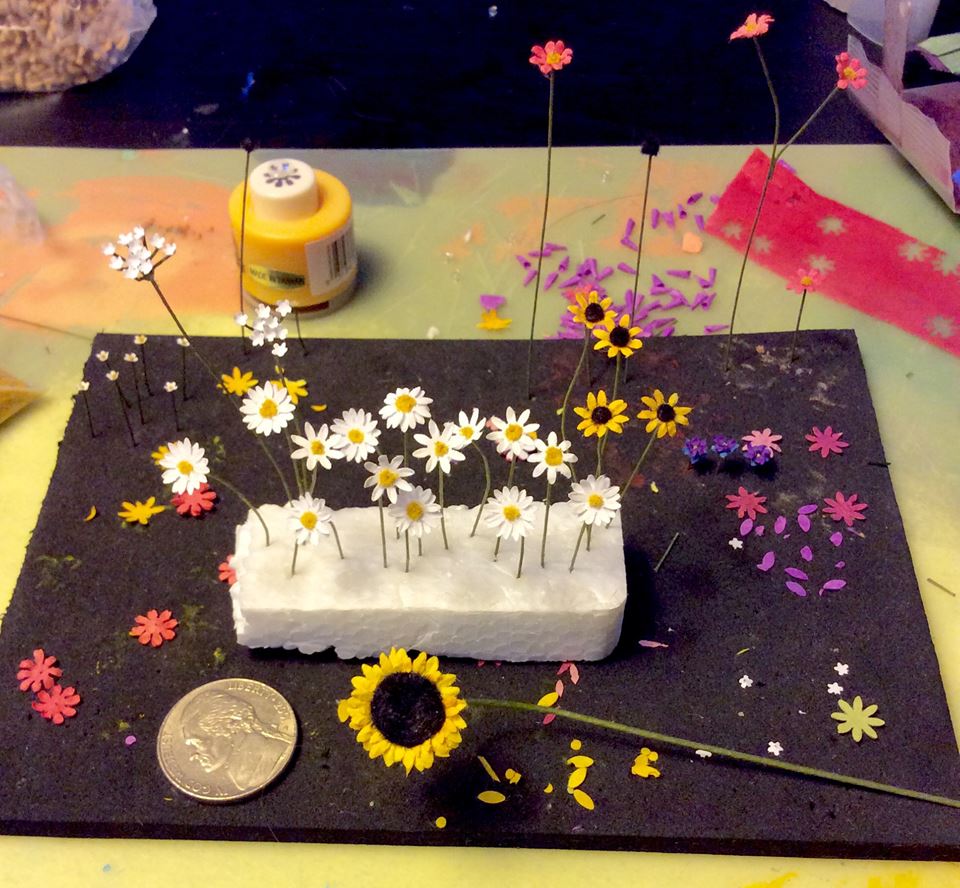Botiny Miniatures
| Website | Etsy | Twitter | Pinterest | Facebook |
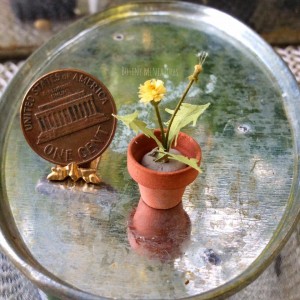 What’s your earliest memory with miniatures?
What’s your earliest memory with miniatures?
The first memory that always comes to mind is when I was very young, still in elementary school, my mother and grandmother took me to a doll show. I don’t remember now where it was, but I do remember wandering around with them staring in awe at all of the tiny things. There were miniature tea sets and dishes, all sizes of dolls, and just about any accessory you could think of. The best part for me though was the book my grandmother got for me. It was The Doll House Mystery by Flora Gill Jacobs. I got to meet her and she even signed the book for me. I think I read it nonstop, all the way through. And then I read it again!
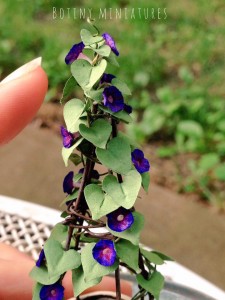 Why the current focus on miniature plants?
Why the current focus on miniature plants?
I’ve always enjoyed gardening. I used to help my mother in her flower garden, and my father in the vegetable garden all the time when I was younger. I even had a little plot of my own a friend and I cleared and planted. We would spend hours “working” in it. It usually devolved into playing in the dirt, but we were very proud of that little space. Currently, my focus is on miniature plants because I love recreating all of the tiny details that each one has. One of the best things about miniatures is how detailed and realistic they can be. For me, adding plants or flowers to a mini scene can really make a huge difference in how it is perceived. Plants can create such a cozy feeling in a real-life setting. I feel the same way about a miniature scene. I also get distracted easily, but there is such a huge variety of flora out there; I don’t think I’ll ever get bored crafting them.
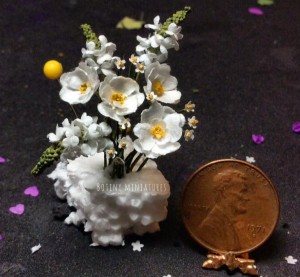 What is your favorite type of miniature plant to make?
What is your favorite type of miniature plant to make?
One of my favorite garden plants in real life, and to make in miniature, is the hollyhock. My mother had some growing in front of the house when I was a kid, so I always think of that when I’m making them in miniature. They are tricky to make and that keeps me interested while I’m working. There are several components to make them. I like to recreate as many botanical elements as possible with my flowers, and hollyhocks are perfect for that. You can make thick stems, round buds, open and partially opened flowers, big yellow stamens, each petal, the sepals behind the petals, and the fantastic wide leaves. They’re a flower that really has a lot of character and will instantly brighten up a mini garden.
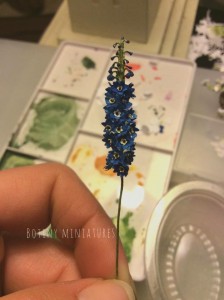 What is the most challenging miniature plant to make?
What is the most challenging miniature plant to make?
There are many that are challenging. They are usually the plants that have more complex petals, or prominent pistils and stamens. For example, foxglove can be really tricky because each flower is sort of tube shaped. To mimic that shape in paper you have to roll a tiny shape around the tweezers and glue it. With pieces of paper no bigger than a ¼”, your fingers can really get in the way. Especially when you add glue! Flowers like the Turk’s cap lily or fuchsia can also be challenging because they have stamens that like to stick out from the flower. When making these in miniature, I like to separate out strands of thin thread or landscaping fibers to recreate the stamens. Each flower receives multiple strands, and they are cut short to stay in scale. I always have to make extras because I inevitably lose some during the process.
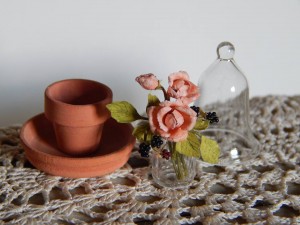 Any favorite artists or designers that focus on botany in their work?
Any favorite artists or designers that focus on botany in their work?
One of my favorites, who I’ve just recently found, is Michelle Morin. She does really amazing paintings of plants, leaves and animals. They’re more abstract than exact reproductions of things, but the colors and design are really phenomenal. She has prints and originals available in her Etsy shops.
I also love to look at old botanical drawings. Since they often include all the little bits and pieces of a plant, they can be really helpful in making miniature plants.
What advice would you give to new miniaturists?
If your first attempt doesn’t turn out well, don’t get discouraged! My first miniature flowers looked absolutely terrible. I got frustrated and didn’t work on any for months. Even now, every attempt I make doesn’t turn out well. I have a little box of all the flowers that didn’t turn out. 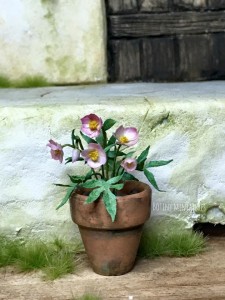 I keep them because I can learn what not to do next time. If you’re unhappy with a result, try again! Use the mistakes to learn and perfect your flowers. You’ll be surprised what new types of techniques work when you play around a little.
I keep them because I can learn what not to do next time. If you’re unhappy with a result, try again! Use the mistakes to learn and perfect your flowers. You’ll be surprised what new types of techniques work when you play around a little.
What is the most memorable miniature you have ever seen?
Jessica Wiesel of Weazilla makes really fantastic animals, toys and trophy plaques. While at a show in Virginia, I stopped by her table and saw that she also makes little oddities and curio type objects. The ones that stick out most in my head was a replica of a mummified Egyptian cat and the Fiji mermaid. One of these days I’d like to make a miniature museum or curio shop. The cat and mermaid will be perfect for that!
Botiny Miniatures was created by Alexandra who hails from Calvert, Maryland. To see her miniature plants and botanical creations, visit her website or shop on Etsy! Follow her tiny terra updates on Twitter, Pinterest, and Facebook.
